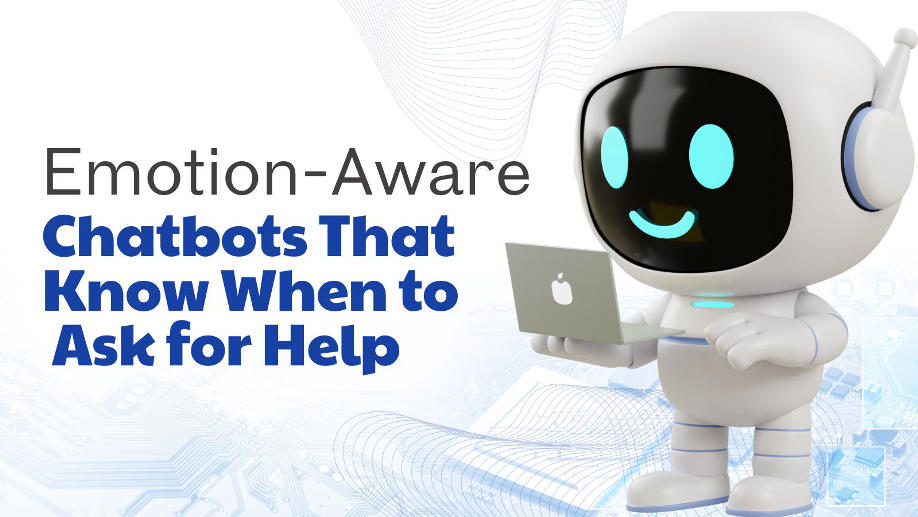Robotic Process Automation (RPA) is quickly becoming an important tool in the world of digital technologies. It’s leading to companies sharing management of routine tasks which boosts efficiency and reduces mistakes by humans. Because cloud computing has expanded, RPA solutions are now faster and more versatile than in-house models. To stay ahead in a quickly changing market, businesses rely heavily on these RPA systems based in the cloud.
This article includes information on the essentials of cloud RPA, requirements for qualified RPA developers, the increasing popularity of RPA, leading RPA solutions today and how cloud RPA interacts with standard software services. It also discusses the ways evolving technologies like Agentic Artificial Intelligence are transforming how workforce automation happens. By using market reports and statistics, this complete guide explores how companies are using smart automation more often.
What is Cloud-based RPA?
Robotic process automation can now be performed using cloud technology rather than local computers. You can operate software bots in virtual conditions without worrying about the infrastructure behind them because of these tools. Using cloud-based RPA solutions offers many benefits. Some main benefits are:
Scalability
A major advantage of cloud-based RPA is that it can handle an increasing workload. Organizations are able to change how they use automation as their requirements adjust over time. Major corporations and smaller startups can use Cloud RPA to automate more things, without needing to buy costly equipment.
Cost-Efficiency
Expense savings are a further important reason to use technology. Most traditional RPA installations require buying hardware, software licenses and paying for ongoing support costs. With cloud RPA, you pay on a subscription basis, so you spend less to begin and can make steady plans.
Easy Implementation
One more major benefit is quicker deployment. Cloud RPA platforms usually include pre-configured the tools and services required to start automating processes right away, so businesses can go live rapidly with their automation projects. Long installation or preparation phases are unnecessary.
Better Access
Lastly, cloud-based RPA guarantees more access. Encouragement of cooperation and enhancement of responsiveness come from teams’ ability to access bots, track performance, and control processes from anywhere in the world.
Gartner projects that 90% of new RPA deployments will be cloud-native by 2025, a sharp increase from only 20% in 2021. This number emphasizes the rising dependence on cloud infrastructure for automating projects.
Employ Committed RPA Developers For Better Services
Hiring RPA developers is essential to unleash the full potential of cloud-based RPA. These specialists provide particular knowledge in developing, constructing, deploying, and maintaining custom RPA bots suited to meet specific corporate needs. Reasons to hire dedicated RPA developers:
Custom Scripts
Custom automation scripts suited to your company’s particular processes can be created by dedicated RPA developers. This helps to maximize efficiency by guaranteeing perfect integration with current systems and processes.
Upkeep And Scalability
They also manage upkeep and scalability. Dedicated developers can modify bot logic, add new features, and guarantee bots maintain top performance over time as your automation needs evolve or vary.
Experience In Using Automation Tools
These developers are proficient in using the top RPA technologies like Automation Anywhere, Blue Prism, and UiPath. Their knowledge of these systems enables them to use sophisticated capabilities, including artificial intelligence integration, data analysis, and workflow orchestration, to improve automation results.
Safety And Security
Another important element that devoted developers control is security. To guarantee sensitive business processes are automated securely, they adhere to the best standards in coding, data management, and access control.
According to the Deloitte Global RPA Survey, 78% of organizations with successful RPA projects run in-house or have committed RPA teams. This emphasizes how crucial specialized talent is for producing results from automation.
Top cloud-based RPA programs in 2025
UiPath Automation Cloud
Because of their strong features, simplicity of use, and scalability, several cloud-based RPA solutions have become well-known. Among these, UiPath Automation Cloud stands alone as a completely controlled SaaS platform. It provides a toolkit for process identification, bot development, and analytics. UiPath is appropriate for companies of all sizes because it offers AI-powered document understanding and hybrid deployments.
Automation360
Another strong cloud-first platform is Automation360. Built-in artificial intelligence features abound, along with a simple drag-and-drop interface and a large bot marketplace. Its cloud-native design guarantees quick deployment and easy upgrades.
Microsoft Power Automate
Companies already running Microsoft 365 can benefit from Microsoft Power Automate since it provides low-code development features and naturally fits within the Microsoft ecosystem. Microsoft power automate is considered as one of the best RPA tools. Companies can use it for unattended as well as attended automation, therefore, its flexibility fits several situations.
Blue Prism
Designed for large-scale corporate automation, Blue Prism Cloud now falls under the TIBCO family. It offers strong compliance measures, powerful governing elements, and AI-powered decision-making tools. Heavily controlled sectors especially benefit from this platform.
Kofax
Kofax RPA focuses on document-centric processes. It uses OCR, NLP, and analytics to automate activities involving great amounts of unstructured data. It fits perfectly well for all the sectors, particularly the healthcare and finance sectors, where document processing is essential.
Incorporating RPA Into Software Development
Apart from automating business processes, RPA helps to improve modern software development services. Automation can simplify several development projects, increase consistency, accuracy, and speed.
- RPA can automate code deployment operations in DevOps settings. Bots can handle mundane tasks, including code packaging, build script executions, and deployment to test or production environments, hence lowering human labor and reducing mistakes.
- RPA can run repeatable test scenarios across several contexts during quality assurance. Bots can log bugs, compare outputs, and even run tests after patches are added. This shortens release cycles and enhances test coverage.
- A McKinsey analysis finds that adding RPA to QA processes can cut testing time by up to 40%, therefore turning it into a critical element of agile and DevOps workflows.
Real Uses of Cloud-Based RPA
Cloud RPA is changing companies in several sectors:
- Bots in banking and finance automate Know Your Customer (KYC) procedures, fraud detection, and loan processing, as well as other activities. These bots can finish tasks in minutes that usually take hours.
- RPA manages patient registration, billing, and insurance claims in healthcare. Automation enables healthcare providers to concentrate more on patient care by lowering administrative burdens.
- Businesses in the retail and e-commerce sectors employ RPA to manage orders, inventory, and customer inquiries. This improves customer experience and accelerates fulfilment.
- HR departments automate employee onboarding, interview arranging, and resume screening. This lets human resources professionals focus on employee engagement and strategic hiring.
Companies using RPA in HR have reported a 30% decrease in time-to-hire, therefore demonstrating the actual advantages of automation in recruitment and onboarding operations.
Future Trends in Cloud-Based Robotic Process Automation
- Hyperautomation—where RPA is integrated with artificial intelligence, machine learning, and analytics to provide end-to-end automation. This characterizes the development of cloud-based RPA.
- Low-code and no-code RPA development solutions are growing more popular since they let business users create bots without much programming experience. This speeds acceptance and democratizes automation.
- Small and medium-sized firms are finding automation more easily, thanks to subscription-based approaches like RPA-as-a-Service (RPAaaS). These models are cost-effective and provide versatility.
- Integration with blockchain technology is a highly developing field. RPA combined with blockchain can provide transparent and immutable audit trails, therefore increasing trust and compliance.
- RPA bots will work closer to data sources as edge computing develops, therefore enabling real-time automation in manufacturing, logistics, and remote activities.
Grand View Research projects that the worldwide RPA market will rise at a 33.6% CAGR to reach $13.4 billion by 2030. This estimate highlights the great promise of cloud-based RPA in the years ahead.
Agentic Artificial Intelligence: Automated Next Phase
Although conventional RPA emphasizes rule-based task automation, Agentic Artificial Intelligence offers the future. This new technology lets software agents learn from data and change to meet changing circumstances.
- Agentic AI in workforce gives automation a level of decision-making; instead of only adhering to predetermined instructions, these agents can assess objectives, prioritize actions, and select the best route ahead depending on real-time data.
- Agentic AI-powered bots can grasp the context of communications, manage difficult questions, and solve problems. This enhances customer satisfaction and shortens resolution times in customer service.
- The HR department can use Agentic AI to handle onboarding by scheduling training sessions, gathering paperwork, and responding to policy-related questions, all free of human interaction.
- Agentic AI in finance helps to maximize budgeting by looking at past data, spotting spending trends, and suggesting cost-cutting initiatives. This enables more deliberate decision-making.
- IDC data show that firms combining RPA and Agentic AI in workforce have 35% higher productivity benefits than those using RPA only. This underlines the potential of intelligent agents to augment conventional automation.
Complications In Cloud RPA Integration
Though it has advantages, integrating cloud-based RPA presents some turbulence:
- Top priority is data security. Businesses need to make sure delicate information is encrypted and access is strictly managed since bots work on cloud platforms.
- Another challenge is legacy system compatibility. Older program applications may not provide contemporary automation interfaces, so integration is difficult and tiring.
- For success, change management is absolutely essential. Concerns of job loss can cause workers to resist automation. Open communication and reskilling initiatives can help to carry out this change smoothly.
- Long-term success depends on bot upkeep. Regular updates are needed for bots to meet shifting demands for software interfaces, compliance rules, or workflow adaptations.
Conclusion
Offering unmatched scalability, efficiency, and flexibility, cloud RPA are at the forefront of digital transformation. When companies hire dedicated RPA developers and use the appropriate tools, they release the full potential of automation. The setting of automation is changing from simple task completion with the development of Agentic AI to incorporate strategic decision-making. This fusion of AI-driven agents and cloud-based RPA solution is a new age of workforce productivity. Companies can set themselves up for success in an ever-more digital and automated environment by adopting cloud-based RPA.




